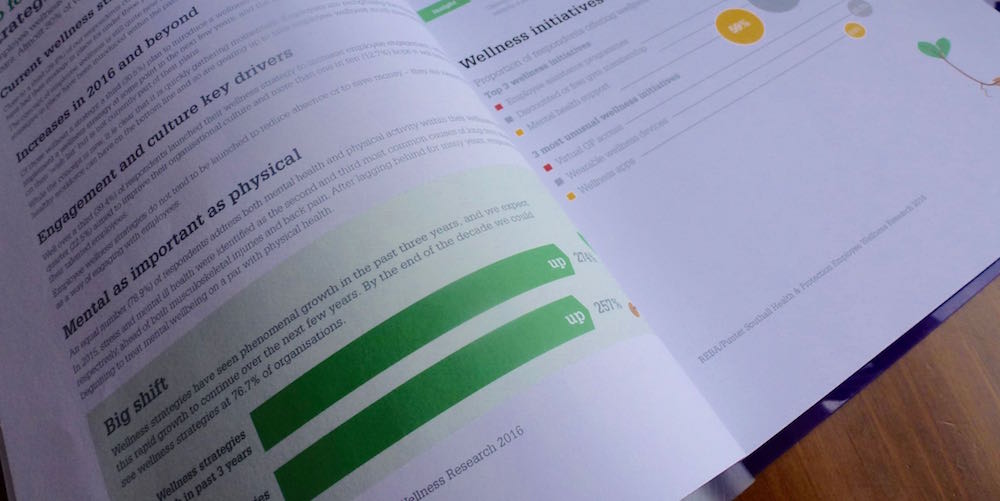Employee Wellness Research 2016: wellness at work is rising rapidly up the corporate agenda

While still a relatively new concept for many organisations – with 80% of wellness strategies being launched in the last three years – the findings of the REBA/Punter Southall Health & Protection Employee Wellness Research 2016, reveal that increasing numbers of employers are now recognising the need to support and maintain a fit and healthy workforce.
Wellness strategies on the up
In 2016 and beyond, we can expect to see growing numbers of organisations implementing wellness strategies for their employees. Of those respondents currently without a strategy, a third (30.5%) plan to introduce a wellness strategy in 2016 and a further third (34.7%) plan to do so in the next few years.
When asked why they offered a wellness strategy, over a third (39.4%) of respondents said this was to increase employee engagement, nearly a quarter (22.5%) did so to improve their organisational culture and more than one in ten (12.7%) used it to retain talented staff.
Adressing both physical and mental wellbeing
The research also uncovered that equal numbers of respondents (78.9%) use their wellness strategies to address both physical and mental wellbeing. According to Absence Management 2015, published by the CIPD, mental illness is the third most common cause of long-term absence from work. After lagging behind for many years, it is encouraging to see that employers are now investing in the prevention and treatment of mental health issues.
The findings revealed that the most popular wellness benefits are employee assistance programmes (EAPs) (86.8%), followed by discounted gym membership (72.2%) and mental health support (59%). The three most unusual initiatives offered are Virtual GP access (11.6%), wearable wellness devices (10.3%) and wellness apps (8.5%). While the traditional wellness benefits remain popular, many believe that the convenience offered by wearable devices and online support (such as virtual GPs, online health questionnaires and podcasts) will see these newer wellness initiatives grow in popularity.
Increased investment in wellness
When it comes to budgets, the renewed focus upon wellness within the workplace is likely to result in increased investment into wellness strategies. Nearly half of all respondents (46.8%) expect their wellness spending to increase in 2016. The median annual spend amongst respondents with a strategy in place currently stands at between £26 and £50 per employee.
Debi O’Donovan, director at REBA, said: “The role of employee wellness strategies is undergoing a fundamental change. This is being driven by societal, governmental and economic pressures. This includes the rise of the ageing workforce, the impact of the digital age on how and where we work, the demands of Generations Y and Z, a return to the war for talent and the increasing inability for employers to differentiate themselves by their pensions offering due to auto-enrolment.
“This research shows that wellness strategies are being primarily driven by the need for employee engagement and improved culture.”
Beate O’Neil, head of wellness consulting at Punter Southall Health & Protection said: “The findings of this research reflect our own experience of the market. We are seeing increasing numbers of employers who are now looking to invest in wellness initiatives for their staff. Wellness at work is moving from simply being a ‘nice to have’ to a ‘must have’ for organisations who are looking to retain and recruit talented employees.”
Download a free copy of the 36 page, indepth REBA/Punter Southall Health & Protection Employee Wellness Research 2016
“The reason why is simple – a healthy workforce is good for business. Investing in your employees’ wellbeing – both physical and mental – can lead to increased employee engagement, greater productivity which in turn can have positive impact on the bottom line.”
Download the Employee Wellness Research 2016 here.






